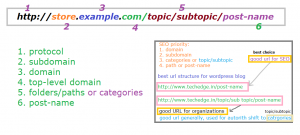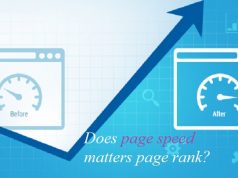Along with unique and fresh content, several factors influence search engine rankings. In this article, I will explain some on-page SEO techniques which will boost your page rank. New blogger experiences best results if you follow this on-page SEO tips.
On-page SEO factors:
 Content of the page
Content of the page
The content in your page should simple and straight information, which the people are actually looking for on the search engines. No matter what template design and on-page and off page optimization you are using.
If the content in your blog is relevant to the users. Users will stick to your page. If they found that information you were given is awesome they will become as Royal visitors to your blog.
If you write content for people not for the search engines, even in the longer run you will be on top in the search results. Create trust and brand to your content from users perceptive.
Title Tag:
This is second most important part of on-page SEO, after good content. According to SEOmoz study, the titles with targeted keywords in first, ranked high when to compare titles with focus keywords, in the middle, and at the end. Use SEO friendly page titles.
 It is better Use medium tail or long tail keywords when to compare one-word keywords. Because one-word searches have more competition when to compare a group of words. Generally, search engines use page titles to recognize what information the website contains. So you can understand the importance of page titles.
It is better Use medium tail or long tail keywords when to compare one-word keywords. Because one-word searches have more competition when to compare a group of words. Generally, search engines use page titles to recognize what information the website contains. So you can understand the importance of page titles.
 Generally, search engines use page titles to recognize what information the website contains. So you can understand the importance of page titles.
Generally, search engines use page titles to recognize what information the website contains. So you can understand the importance of page titles.
URL structure:
Coming best URL structure, it should be short and keyword rich. The targeted keywords in the URLs explains which the content belongs to on that page. Better optimization of URLs improves your chances to rank higher in the search engines.
 SEO friendly URL:
SEO friendly URL:
https://blog.techedge.in/seo-friendly-page-title/
NonSEO friendly URLs like this:
http:// www.techedge.in /? p=4309
Generally, after installing WordPress automatically your URLs are in SEO friendly structure.
Optimize media for SEO:
Placing images and content related videos to your blog will increase time spend on your blog. Simply images SEO optimization is one of the major parts of the on-page SEO optimization. There is an English idiom “A picture is worth a thousand words”. so add SEO optimized media to your website.
Proper using of optimal images may clearly transfer your message to the audience. In addition to this images can be a good source of traffic from google images search and other image search engines.
The main factors to optimize images are alt tag, title tag, image size, image name and image linking.
Use relevant inbound and outbound links:
Try to link related pages within the page content called internal linking. Page links may be from your site or other websites. If the inbound links from trusted and high authority sites (like Wikipedia, mashable etc.). Google notifies it as relevance signal.
Inbound links (backlinks)mean links to relevant topics in your website from high authority sites. Outbound links mean links to other sites from your website.
Use powerful anchor text in linking:
Better to use link anchor text having related keywords. Use anchor text “Google ranking factors” instead of “click here” and “see more”.
Content SEO:
Use keyword planner to find good low competition keywords and target those keywords. Drop targeted keywords in first three paragraph. Don’t repeat the keywords, try to write the article in a natural way. Don’t use more stop words.
Heading Tags:
Use H1, H2, H3 tags in the article to highlight the content. Use targeted keywords at starting of this heading tags.
Site speed:
Try to improve site speed. faster loading will improve the better user experience. Google I considering the page speed as one of the relevance signals. Improve page speed by using CDN, leverage browser caching, enable G-zip compression which helps to improve faster page loading.
Optimize site loading less than 2-3 sec. Use the best hosting for your website which helps faster server response, ultimately improves page speed.
Use social sharing buttons:
Using social sharing buttons help easy to share your content by the user in social networking sites with one click. This will bring more social traffic.
Follow all these on-page SEO checklists definitely, boost your page rank. Remember this SEO optimization is not one day process, take care each and every time while writing the article. if you like this information share with your friends.



